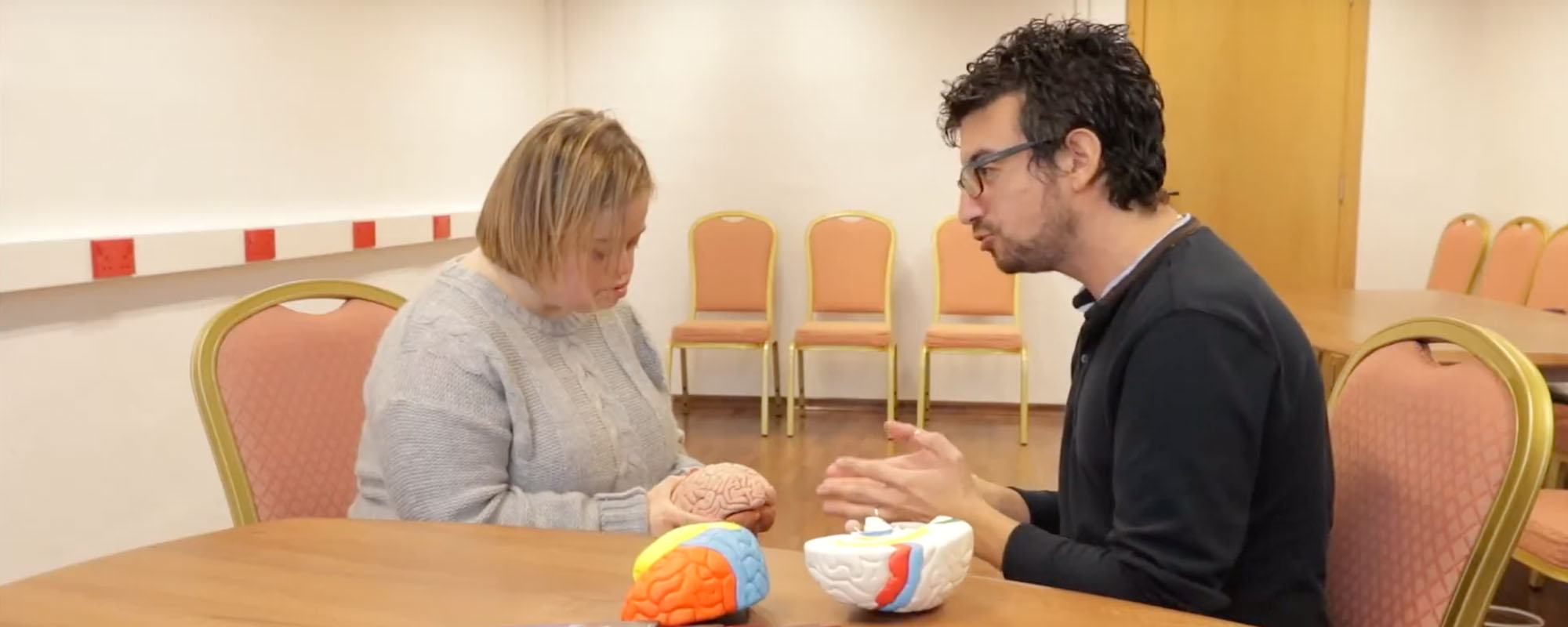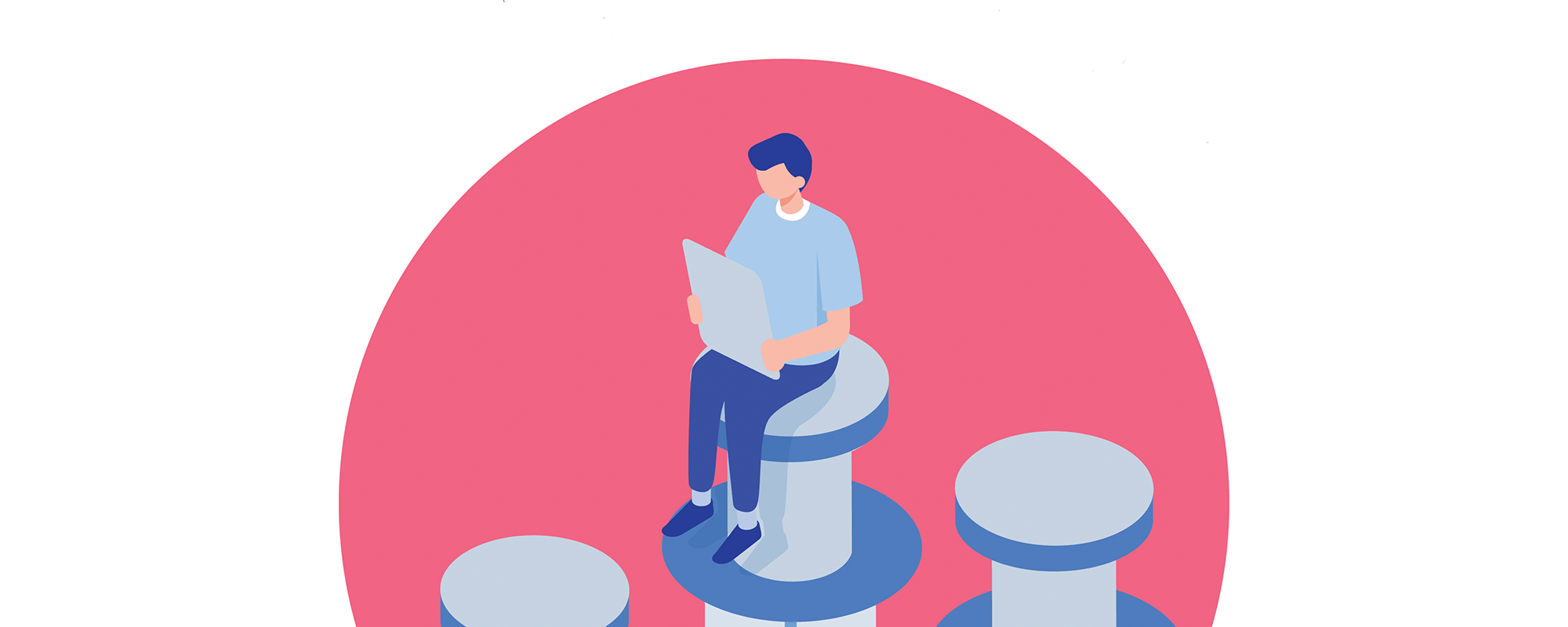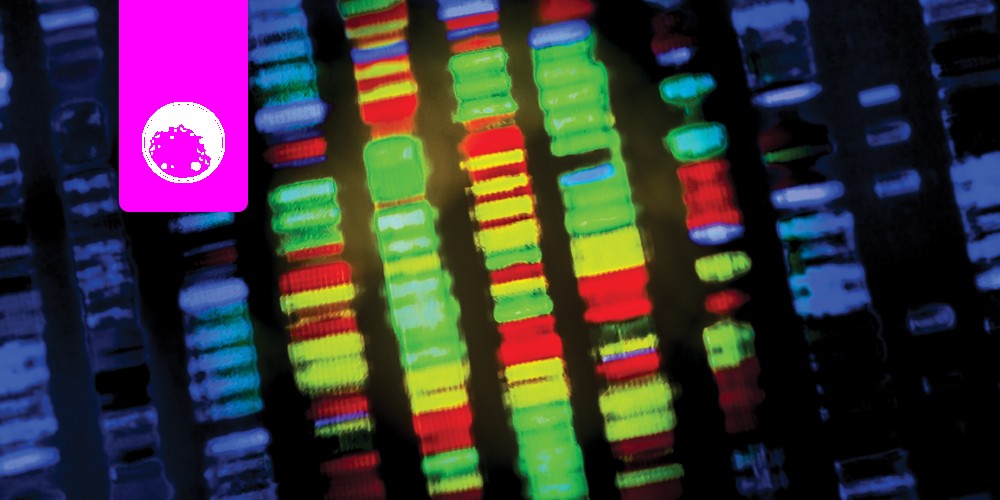Can we look inside our brains? Denise Camilleri of Opening Doors Malta interviews Dr Claude Bajada of Department of Physiology & Biochemistry about the science of the brain.
Continue readingDNA spacewalk
Can bacteria grow in space? How do cells respond to radiation? Geneticist Prof. Joseph Borg realised that to find out, he must make some friends outside his discipline.
Continue readingI, in the Sky
Author: Andrea Francesca Bellia
This summer, I was fortunate to experience the rigorous process of academic research and publishing. Under the supervision of Dr Sandro Lanfranco, I examined the efficiency of using a drone to obtain large-scale vegetation maps, which resulted in a paper in the journal Xjenza Online. The study shows how influential technology has become, even in traditionally ‘low-tech’ fields like ecology.
Continue readingPutting patients first
Most cancer treatments involve complex surgeries, toxic drugs, or taxing radiation, but there are other answers to this devastating disease. Prof. Pierre Schembri-Wismayer is developing a vaccine that works by harnessing our body’s own immune response and directing it towards the threat, fighting the disease as an inside job. Words by Gail Sant.

Our bodies produce billions of cells every day. With such industrial production rates, it’s entirely likely that a mistake or two are made along the way. Cancer cells are those mistakes—faulty mutants.
Humans are also equipped with mechanisms that allow them to recognise cancer cells and get rid of them, but there can be trouble when distinguishing ‘bad’ from ‘good’. Part and parcel of cancer is that it compromises the immune system to ‘escape’ our ‘guards’. This precious time during which the body fails to recognise the mutants is the golden opportunity for cancer cells to multiply and thrive. And as the cancer grows, so do the problems that come with it.
Despite the varied types of cancers in existence, treatment usually entails surgery and chemotherapy. But the risks and side-effects that come with them are heart-wrenching.
But what if a vaccine can stop cancer in its tracks? Prof. Pierre Schembri-Wismayer and his team are working on a type of immunotherapy that enables the body to recognise the invading cancer sooner, directing the attack as a result.
How it works
Vaccines work by triggering an immune response in the body. These cancer vaccines developed by Schembri-Wismayer work the same way. He collects a piece of the cancerous tumour and denatures (a process not unlike cooking or boiling) it in formalin, which modifies its shape, making it easier for the body to recognise as a foreign body. The body can then remove it.
Our bodies have a naturally low tolerance when it comes to foreign entities, so when a vaccine injects the cooked tumour, the body recognises it and ambushes both the injected and the original cancer present in the patient, ‘engendering a stronger immune response’.
Inspired by a Japanese research paper, yet baffled by its lack of recognition, Schembri Wismayer modified the method outlined there and created his own version of the vaccine to accommodate his first patients: a pair of pet rats.
The founding pets
Schembri-Wismayer had the perfect opportunity to test the potential cancer treatment when a student’s pet rats fell ill. Their owner mistakenly overfed the rats to such an extent that they became obese. ‘The rats became square-shaped,’ Schembri-Wismayer notes. With the increase in body fat, their oestrogen rose too—a female sex hormone that increases the risk of breast cancer. As a result, both rats developed the disease, and even showed metastasis in both underarms, which also happens in humans. Obesity is linked to cancer in many animals.
Within days, Schembri-Wismayer took samples from the rats and produced a tailor-made vaccine for each rat. Two weeks after their treatment, the rats’ owner informed him that they were in a lot of pain. ‘But tumours don’t hurt,’ Schembri-Wismayer explains.
An operation on the rats revealed that the tumours had broken down (were full of dead cells). This confirmed that the rats’ pain was actually stemming from the inflammation caused by the vaccine itself.
Physical anguish aside, this was a good sign, an indication that the body was fighting back. In the end, the tumours burst, necrosed, and died. The rats beat the cancer, and thus a new research project found its beginnings.

Hurdles ahead
Having had such promising results, and with ethical approval from the local Animal Welfare Council as a therapeutic option, Schembri-Wismayer turned his attention to a group of animals which would benefit a lot from such vaccines—people’s pets.
‘In many cases, once a dog or a cat gets cancer, there’s not much you can do if it spreads,’ says Schembri-Wismayer. His vaccines can offer new hope to pet owners when cancer strikes and the only option is to put them down. And so it has.
With consent from owners and vets, Schembri-Wismayer offered the therapy to cats and dogs of different breeds. The types of cancer varied, as were their progressions, and so the results were just as jumbled. The treatment was successful for some, but not all. Considering this treatment is still in its early days, an element of trial-and-error puts some animals at a disadvantage, particularly those who are very ill when the disease is in its last stages. It should also be mentioned that this research project was held back by challenging communication difficulties between everyone involved. ‘Different priorities made the process more difficult than it had to be,’ Schembri-Wismayer notes. The ideal scenario would see him and the veterinarian working hand-in-hand to follow up on the animals and their response to the treatment using blood tests and ultrasound.
That said, the potential of the treatment isn’t limited to individual successes. Each pet-patient contributed to a better understanding of the treatment, especially when owners were immensely helpful and allowed the veterinary surgeon to provide the team with a piece of the tumour after treatment (even if the pet was put down). With that in mind, the prospects of this type of immunotherapy are promising to say the least.
Moving onto human trials
While the vaccine’s promising results might be a step in the right direction, the cure for cancer doesn’t seem to be in the near future. The ongoing animal treatments are providing useful information, but the move to human trials is gruelling. Testing out new therapies comes with storey-high hurdles, including financial ones, that need to be overcome.
The reality is that this kind of therapy would work best as a first response (or after debulking surgery). Because the more widespread the cancer, the bigger the immune response the vaccines create. And ‘if a reaction is strong enough, it might be enough to kill the patient,’ Schembri-Wismayer explains. But medicine works with a set of rules and best practices. Doctors are obliged to try what’s known to work first before moving onto lesser-known experimental drugs. This fact is a challenge. Despite the hurdle, Schembri-Wismayer is certain that people would eventually volunteer to be involved in clinical trials, as happened with HIV/AIDS treatments. ‘Unfortunately in end-stage cancer you have no other options.’
Vaccines for human use need to be produced in Good Medical Practice (GMP) facilities, cites Schembri-Wismayer. However, there are no such facilities locally. After a long search, he has finally found an industry partner that has agreed to create the vaccines in Belgium, against a price, as long as he sets up the clinical trials. This little victory comes with its own set of problems. In this case, the new limiting factor is mainly funding. Clinical trials typically cost millions.
The politics of Cancer
Logistics aside, the hunt for a cure faces problems even more complex than what already seems immensely problematic. Schembri-Wismayer explained that there’s a major systematic flaw.
‘Many cancer researchers are not doctors. Their career depends on peer-reviewed publications and not finding a cure.’ This means that as long as their findings are statistically significant or are ‘good enough’ to be published in a high-end scientific journal, their job is done.
Granted, no research finding can be seen as wasted knowledge. Each can be seen as a small step forward. However, Schembri-Wismayer believes that the millions of funds designated to cancer research should have more rapid deliverables that directly benefit the patients, not just academic careers. Unfortunately, the cancer research community is a circular one, where scientists review other scientists mainly based on publications to get further funding.
‘I am not trying to publish in Nature [the world’s top academic publication], I’m trying to cure cancer’, says Schembri-Wismayer as he confesses that he feels guilty about not letting his students publish papers. But this is a necessary evil in the journey towards therapies. ‘Once a method is published, no company will touch it because it’s in the public domain.’ The method would have no monetary value since anyone could copy it. Needless to say, no pharmaceutical company will industrialise a drug that doesn’t guarantee profit.
Speaking of profit, Schembri Wismayer expressed that the financial aspect of this study is one of his greatest motivations. ‘Most of these drugs cost the Earth’, he said, adding that ‘when each shot costs €30,000 and the success rates are low, very few National Health Care systems are going to provide it.’ Take Yervoy, a drug commonly used to treat melanoma; one dose can cost up to €4,000. Survival rates after treatment are low. And there are no ‘money-back-guarantees’ if the outcome is less than satisfactory. As a result, studies have shown that a quarter of cancer patients in the US choose not to take such prescriptions because of such high prices. Money shouldn’t be the limiting factor in the fight for survival. Schembri-Wismayer believes in cancer treatment that’s affordable for everyone.
Fighting the good fight
Even in the face of all these odds, Schembri-Wismayer persists. A cancer patient isn’t just a number; a cancer patient is also a mother, a brother, or a friend. And knowing this is enough to help him and thousands of other cancer researchers to continue pushing through.
One in two people in the UK will be diagnosed with cancer during their lives. It is a harsh reality, but humankind will eventually find a cure just as it has with other previously deadly diseases such as influenza or measles. This vaccine is in its early stages but with the proper support, it may contribute to an affordable, life-saving cure.
Living with a rare disease
Author: Clayton Axiak
Picture yourself waking up one morning with a severe, relentless itch that no clinician or diagnostic tool can understand. Your life would be thrown off kilter. Quality of life would suffer financially, psychologically, and socially as you try to look for a glimmer of light at the end of the tunnel. This is what life is like for most people living with a rare disease.
Often barraged with terms like ‘unknown’ or ‘undiagnosed’, matters can get even more challenging when the condition becomes more elusive or develops life-threatening consequences. And all of this is exacerbated by inequities in treatment and high costs of the few existing drugs that are available.
By EU standards, a rare disease is one that affects fewer than one in 2,000 individuals. And these ‘less common’ ailments are difficult to raise monies for to research, leaving large gaps in scientific and medical literature. One such disease is the poorly understood Idiopathic Hypogonadotropic Hypogonadism (IHH).
Characterised by the absence of puberty and infertility, IHH can be compounded by potentially severe characteristics such as congenital heart disease, osteoporosis at a young age, and early onset of Alzheimer’s disease.
Its cause is usually a genetic anomaly, but a single genetic change can affect two people very differently. This gives rise to an unparalleled complexity that makes the cause harder to decipher. Symptoms are not clear-cut and sometimes mask the actual underlying cause, bringing about misdiagnosis and delayed treatment. Timely diagnosis is crucial for successful treatment that enables the patient to achieve puberty and induce fertility. But this is not always possible.
Under the guidance of Dr Rosienne Farrugia, I am currently analysing and expanding upon a preliminary assessment of IHH in Malta using high-throughput sequencing (HTS) technology (conducted by Adrian Pleven). With HTS, we can read a person’s entire DNA sequence and attempt to identify differences in the DNA code which lead to such diseases.
What the team has found is that some genetic variants typical of IHH are more common in the Maltese population when compared to mainland Europe and African populations. This is likely due to the reduced genetic variation of our population, shaped by successive events of population reduction and expansion throughout our history.
By mapping the genetic cause of diseases prevalent on our islands, we can help medical consultants to employ specific screening tests that are tailored for local patients suffering from IHH. Such advancements in genomic technology and personalised medicine can make a huge impact on people’s lives. And not only to those suffering from IHH; researching one disease, however rare it may be, can shed light on mechanisms that prove useful in treating many others, ensuring that when it comes to health, no one is left behind.
This research project is being carried out as part of a Ph.D. program in Applied Biomedical Sciences at the Faculty of Health Sciences.
Science and coffee, anyone?
In an age of misinformation, having a grasp on current affairs and research is essential for us to be active, responsible citizens. Gillianne Saliba writes about the dire need for more dialogue and engagement from citizens and scientists alike.

For many, science is far removed. It’s just a subject they had to take at school. Or the star of crazy stories on newspapers, or videos and memes on social media. Opposing views are a dime a dozen. And sometimes it’s very hard to discern between them; what’s right? what’s wrong? ‘It’s complicated,’ they say, ‘it’s hard’, and so most people move on, letting others do all the talking. As a result, science and citizens have had a rocky relationship. But when the issues being discussed relate to health, technology, and our environment, that is, when they affect us directly, we need to be able to engage.
Science Communication (SciComm for short) can offer a solution to this problem.
SciComm can take many forms. Articles, films, museum exhibitions; you name it. In the wake of a scientific knowledge-gap in the community, SciComm has taken root and has been rapidly growing over the last 40 years. Researchers want to share their ideas and get citizens’ input, gauge interest, and see what others have to say.
Enter Malta Café Scientifique.
To create a safe space where people can chat about science, Malta Café Sci organises monthly science communication events in Valletta where researchers and professionals discuss topics of interest with attendees. Entrance is completely free and open to all, which attracts a diverse audience.

What makes Malta Café Sci special is how it prioritises the public, putting their learning experience first. The events are tailored to them. Speakers keep their talks short and succinct, taking complex scientific concepts and breaking them down, discussing how the research can impact society. The Q&A session that follows is often far longer than the talk itself, opening up a dialogue within the audience. The elitist mantra of ‘it’s complicated’ is so far gone that talks, and the following question and answer portion of the evening, are put to bed with closing drinks where speakers and audience members can have one-on-one time, discussing the topic of the day.
I have been volunteering as an organiser with Malta Café Scientifique for the last nine months. Through the experience, I have gained marketing and public speaking skills.
More importantly, I have had the privilege of a front row seat to pivotal moments in people’s lives—the moment when perception shifts.
I’ve often had audience members come up to me after an event to tell me how the talk changed their ideas. How they are learning to be more receptive but also critical about what they learn and read online. Some point out how they usually steer clear of such events, with many wrongly thinking they aren’t smart enough for them, only to find that they not only understand, but can also participate.
Aside from all this, Malta Café Scientifique is also conducting its own research. Led by Café Sci’s project manager Danielle Martine Farrugia, we are evaluating and interviewing different science communicators about their practices. We’re also evaluating the initiative to understand its contribution to science communication in Malta.
What we can already see is that Malta Café Sci is living, breathing proof of how people can come together when dialogue is open and welcoming. It is empowering local researchers to share their findings with citizens while giving community members the chance to learn and weigh in on work that may have ramifications for them. Where a learning process is no longer from expert to layman, but a continuous sharing of information in both directions.
Note: For more about Malta Café Scientifique’s next events, or if you want to get involved, see its Facebook page or Instagram @maltacafesci. Or email us on cafesci@mcs.org.mt.
Research to business plan: A metamorphosis
Author: Michelle Cortis

In recent years, there has been a shift in the relationship between research and commercial industries. Commercial viability almost always comes into question for ongoing research. Commercialisation can be a boon. When a research project has demonstrated its potential to become a viable business, funding opportunities increase, meaning the research can be turned into a product or service that people can use.
In 2018, as part of a Masters in Knowledge-Based Entrepreneurship, I analysed the commercial potential of an ongoing University of Malta project. I conducted an in-depth market feasibility study on Prof. Ing Joseph Cilia’s Smart Micro Combined Heat and Power System, a device that can be fitted into homes and offices to deliver heat as a by-product of electricity, reducing energy costs. Many EU countries are setting up incentives to make these systems more feasible and attractive to consumers.
For my dissertation, I developed a business plan for the research team. An engineer myself, and having earned a Masters by Research back in 2014, this was different to anything I had done before. My supervisors, Prof. Russell Smith and Dr Ing. Nicholas Sammut, helped me find the right balance between utilising my technical knowledge whilst also analysing the product’s commercial potential. Even my language changed through the process; I began to speak of ‘euros per day’ rather than ‘kilowatt hours’. I learnt to differentiate between technological features and what real benefits future users would gain.
Being presented with a physical product, initially one may assume that it is to be sold to customers, or protected through a patent and licensed to the private sector. However, my market analysis revealed new target audiences that had not been thought of before. Selling the device was not the only way to exploit the project’s commercial potential. What if we leased the product instead of selling it? Should we continue developing the product or is it already innovative enough? What if we developed a spin-out—would it be too expensive or is it worth the investment?
By analysing a project through a commercial lens, all these questions arise, pointing out potential ways to make a good project great. But what makes a good business plan great is when all these questions are answered.
The Project ‘A Smart Micro Combined Heat and Power System’ is financed by the Malta Council for Science & Technology, for and on behalf of the Foundation for Science and Technology through the FUSION: R&I Technology and Development Programme.
Are you carrying out research at the University of Malta which you think may have commercial potential? If so, contact the Knowledge Transfer Office on knowledgetransfer@um.edu.mt
Kemmuna
Despite being one of Malta’s hottest attractions, a lot of what Comino has to offer is covered by the cool blue waters that fuel its popularity. Prof. Alan Deidun and his team have embarked on a journey to bring what’s hidden beneath to the surface, tentacles and all.
Have you ever googled Comino? Approximately 10,900,000 results pop up, and the vast majority of them relate to holidaymaking tips and weather information, with a sprinkling of research projects. Once the hideout of pirates and smugglers, the little island’s crystal-clear waters have now made it a paradise for travellers. But despite the suffocating love and attention Comino gets during the summer months, many of its wonders remain hidden underwater, unattainable to most.
This was the motivation behind Prof Alan Deidun’s most recent documentary, Comino: A Secret Paradise. An academic at the Department of Geosciences (University of Malta), Deidun is an avid diver, environmentalist, and advocate who wants ‘to bring the underwater world to people who don’t normally venture beyond the swimmer’s zone.’
Deidun’s first foray into documentary filmmaking came with Dwejra (2012), a film that featured the long-lost Azure window. Soon after were Rdum Majjiesa (2012) and Mġarr ix-Xini (2013). His big break came with Filfla (2015) which went viral and continues to do rounds on social media today. Even in 2012, the aim was always to highlight the beauty and importance of local Marine Protected Areas. In 2019, this has not changed.
Behind the scenes
The team met to film the first documentary in the series back in 2012 with Monolith Limited. The experience was so positive and fruitful that the team has remained practically unchanged since. Film after film, they all keep coming back to work together. Directed by Pedja Miletic and funded by the Malta International Airport Foundation, Comino is the fifth film in the series.
Filming took place throughout 2018, focusing on everything: marine to terrestrial, shallow to deep, diurnal to nocturnal. Deidun admitted that the team struggled with finding and filming enough organisms. ‘It took around 50 trips to Comino and back to get the footage we needed,’ he says. But the result speaks for itself.
Helping them achieve the sheen they needed for the final work, Deidun and his colleagues used a state-of-the-art 8K underwater camera. Hardware of this calibre is the sort you find on big budget productions like the BBC’s beloved Blue Planet. The camera enabled the divers to film animals from a different perspective, providing audiences with a new experience. Take, for example, the Common Octopus, Octopus vulgaris, a documentary staple whose camouflaging skills got some well-deserved attention in Comino. The camera also came in handy with more delicate, elusive creatures. The weird and wonderful Berried Sea Anemone and the Flying Gurnard, species the team hadn’t been able to capture in previous work, could now be seen in all their complexity.
Science & art for the environment
The motivations behind this documentary are complex, but one big factor Deidun mentions is a lack of science communication—a global issue.
Deidun emphasised that academics need to share their findings. ‘You can’t just publish in a peer-reviewed journal and stop there,’ he says. ‘You need to engage, start a dialogue with society.’ Because despite all of us choosing different walks of life, we share one home, and scientific findings should influence how our environment is treated. To move from research to societal action, communication is key. Scientific findings on their own quickly become stagnant, but through discussion and dialogue, they can thrive in the different layers of our communities: from quick, friendly conversations to formal government conferences. A conscious understanding of our environment leads to its conscious use.
In this case, Comino can help engage people with marine diversity and show them this complex micro-realm that ‘is not just Blue Lagoon.’
Most people know about the Damselfish (Ċawla in Maltese) or the Mauve Stinger (BRAMA! in Maltese). This might make people think that Maltese waters are safe from overexploitation, but this is far from the truth.
The animals that are difficult to see are those that need the most attention. Fauna such as the endangered Rough Ray, the protected, crimson purple Echinaster sepositus starfish and the Striped Prawn all face man-made threats.
‘This has resulted in an alarmingly low fish biomass [amount of fish] for the Maltese waters,’ Deidun says. ‘But that’s not surprising. Maltese waters are constantly fished. Overfishing is a reality.’ Even Comino, a Marine Protected Area (MPA), is surrounded by nets and fishing lines. It seems that while most of us are proud of our crystal-clear waters, we are not paying attention to the problems ailing it. ‘This is what we hope to change,’ Deidun adds.’
Comino’s future; our future
Deidun has plenty of hope. He tells us that ‘our MPAs are paper tigers for now, but the Environmental Resource Authority (ERA) is working on having approved management plans’ which need to be ready and presented to the European Commission by the end of 2019—a step towards a healthier sea with a sustainable future.
As for the future of these documentaries, Deidun has big plans, and they involve Netflix. He also wishes to add the films to digital libraries of local schools. In time, this will all feed into his vision of establishing a local ocean literary centre, a space where people of all ages can learn about our sea through science, arts, and new technology.
The Maltese are an island people. The sea is part of our heritage, a part of our identity. And we must work harder to preserve it for future generations. It is through documentaries like this one that we can appreciate and protect our home. As biologist Jane Goodall once said, ‘Only if we understand, can we care. Only if we care, we will help. Only if we help, we shall be saved.’
Written in blood
Maltese researchers are leading the way in developing new diagnostic tools for cancer. Dawn Gillies finds out more from Prof. Godfrey Grech and Dr Shawn Baldacchino.
Breast cancer survival rates have been improving steadily in recent years. In Malta, 86.9% of patients currently survive, up 7% over the last decade. Thanks to new targeted therapies, the outlook is increasingly bright. But precision therapies need precision testing.
Breast cancer diagnosis has reached new heights and with current tests using tissue biopsies, pathologists can classify patients for specific treatment. Precision medicine goes a step further. It provides more information, predicting the aggressiveness of the cancer and measuring the number of cells from the tumour that spread into the bloodstream.

This does not mean that all requirements in precision therapy have been met.
At the time of writing, there is no simple method to test patients’ ongoing benefit from treatment or to measure different tumour areas from one sample. For this to be possible, we need super-sensitive tests. This is where Prof. Godfrey Grech and Dr Shawn Baldacchino at the University of Malta come in.
Detecting the undetectable
During his PhD, Baldacchino studied a new class of breast cancer representing most cases of the triple negative type, which affects 12% of breast cancer patients in Malta.
In triple negative breast cancers, tests for estrogen receptors, progesterone receptors, and excess HER2 protein all result in negatives and are associated with aggressive tumours.
To detect this new class of breast cancer, Grech’s team have created a new test that uses molecular substances we naturally produce in our body—biomarkers. By pinpointing the right combination of certain biomarkers, they can test for this new class within the triple negative breast cancer cases.
They initially used the test to look at biopsies from past patients. These exercises showed that they could accurately detect the cases—even in samples that were over a decade old! In fact, the test was so successful that the team is now working with biological testing industry giant Luminex to use it in hospitals worldwide. With a patent filed, research labs will get their hands on it later this year with the hope that by 2021 it will be used to directly help patients in hospitals.
However, there is more work ahead. Encouraged by the results so far, the team wants to take the test and other current biomarker tests a step further. They want to use a simple blood sample which is less invasive, allowing patients to be monitored during therapy.
Pushing boundaries
With the method Grech and his team have optimised, obtaining information on new classes of patients that predict therapy use, detecting different tumour areas in one sample, and the use of blood to monitor the benefits of therapy have become a

Photo by James Moffett
possible reality. With technologies from Luminex and Thermo Fisher, they can now read over 40 biomarkers in one test simultaneously. But with blood they need a new angle. And that is happening through another test using particles that originate from cells called exosomes.
Exosomes are tiny messenger bubbles which cells release into the blood . ‘We believe that when there is a tumour in the patient, there will be a signature in these exosomes circulating in the blood,’ says Baldacchino.
Finding these exosomes could mean detecting cancer at an earlier stage than is currently possible. The team believes they would be able to detect the exosomes that point to cancer long before a tumour shows up in scans and other regular tests—and so, they would be able to nip the cancer in the bud. But to do this, they need to be able to decode the messages the exosomes are carrying.
Positives for patients
It’s not only in the realm of breast cancer diagnosis and classification that the team can help patients—they might also be able to improve treatment. ‘Most targeted therapies currently try to inhibit specific receptors and proteins to stop the uncontrolled growth of cancer cells,’ Grech says. But through their research, the team has found that targeting the low activity of specific complexes of proteins in tumour cells is key. Their research models show that increasing the activity of these protein complexes is possible using specific drugs.
This is true for triple negative breast cancer, where the amount of PP2A protein is extremely low. The PP2A protein enables the body to fight the cancer, so increasing its activity would create a chain reaction in the body which could limit the growth and spread of that category of cancer cells.
This approach to treatment has applications beyond triple negative breast cancer. Grech is hopeful that PP2A production could be amped up for different types of cancer too, and lead to positive results.
Managing the unmanageable

When organising a project like this, it’s expected that things won’t go to plan. One of the biggest challenges for Grech’s team has been establishing collaborations with other groups across the globe. They need these connections to provide the samples required to test their systems. With other groups working on similar projects, time is a limited resource. Thankfully, the team found collaborators in Leeds (UK), and Barcelona (Spain), allowing the group access to the samples they need.
What is certain is that support for this work has come in many shapes and forms. The project received funding both from public donations and the Malta Council for Science and Technology. Baldacchino also found an ally in the charity foundation Alive with the help of the Research Trust of the University of Malta (RIDT). He is the first recipient of funding from them, and their first graduate.
Predicting the future
Thanks to projects like these, cancer research has a bright future in Malta. The team has their product launch to look forward to later this year, which will see a drastic reduction to the time and effort it takes researchers and doctors to determine the type of breast tumour.
But a lot of challenges lie ahead. The biggest challenge will come in the move to early stage cancers. These cancers have low levels of substances to detect, which means that any test they develop will have to be extremely sensitive in order to be effective. Successfully identifying these cancers would signal a massive breakthrough for the global medical community—and, more importantly, for patients. Early detection through basic blood tests would open the door to early stage treatment and a higher rate of survival. Nothing could matter more.
Project ‘Accurate Cancer Screening Tests‘ financed by the Malta Council for Science & Technology through FUSION: The R&I Technology Development Programme 2016.








